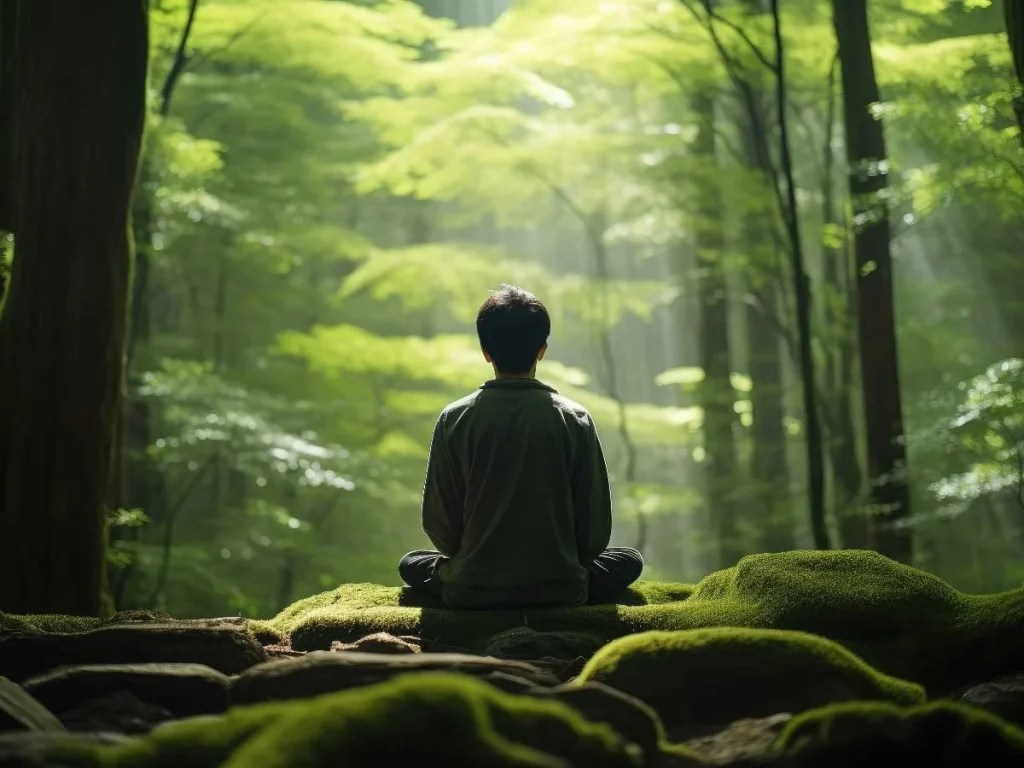The Simple Aesthetics as a Path to Mental Well-Being and Stress Reduction

The Importance of Mental Well-Being in Modern Life
In today’s fast-paced world, where daily routines are often dominated by technology and endless commitments, achieving mental well-being has become increasingly vital. Individuals across the United States are searching for effective strategies to cope with rising levels of stress and enhance their overall quality of life. Among these strategies, one powerful yet frequently overlooked method is to embrace principles of simple aesthetics.
Understanding Simple Aesthetics
Simple aesthetics embodies the ideals of minimalism, focusing on clean lines, uncluttered spaces, and elements that evoke tranquility. This approach encourages us to reevaluate our surroundings, seeking harmony and simplicity in our everyday environments. The significance of embracing simple aesthetics extends beyond mere visual appeal; it encompasses a holistic approach that can substantially impact our mental health.
Benefits of Simple Aesthetics
- Decluttered Spaces: Research shows that cluttered environments can lead to cognitive overload and increased anxiety. By streamlining your living and working spaces, you can improve focus and cultivate a sense of calm. For instance, a well-organized workspace free of distractions can enhance productivity, making it easier to tackle tasks with a clear mind.
- Natural Elements: Integrating plants and allowing natural light to flood your space can significantly elevate mood. Studies have indicated that indoor plants can improve air quality and contribute to levels of psychological well-being. Additionally, exposure to natural light has been linked to better mood and sleep patterns, creating a tranquil atmosphere in your home.
- Color Psychology: The impact of color on our emotions is profound; certain hues can promote feelings of relaxation and peace. Soft blues and greens, for instance, are known to have calming effects, while warmer colors like yellows can invoke happiness. By consciously choosing color palettes for your home or office, you can create environments that support mental well-being.
A Deliberate Practice for Positive Mindset
This aesthetic approach is not a superficial fix but rather a conscious practice that can lead to a more positive mental state. By aligning your surroundings with your personal values and eliminating excess, you enable yourself to focus on what truly matters—clean designs and harmonious elements that encourage mindfulness.
Reconnecting with Our Environment
Exploring simple aesthetics offers individuals a unique way to reconnect with their environment, promoting lasting peace and well-being. As these concepts gain traction across the United States, many are discovering how intentional design choices can profoundly impact daily life. By making small adjustments—like clearing out an overcrowded space or adding a few plants to a room—individuals may find that their mental health improves significantly.
In conclusion, the adoption of simple aesthetics can be a powerful ally in the quest for mental well-being. Embracing minimalism and thoughtful design fosters environments that not only enhance visual appeal but also contribute to psychological health. As we navigate the complexities of modern life, creating serene sanctuaries within our homes and workplaces can become a vital practice for achieving balance and tranquility.

DISCOVER MORE: Click here to learn about creating a serene home
Creating a Calming Environment
The concept of simple aesthetics extends beyond aesthetics; it’s a pathway toward creating a
healthy and calming environment that nurtures the mind. As individuals become aware of their surroundings, the potential for stress reduction and mental clarity grows. By intentionally curating living spaces, we can foster an atmosphere that promotes mental well-being and tranquility.
The Role of Decluttering in Mental Health
One of the most immediate benefits of embracing simple aesthetics is the process of decluttering. According to a study by Princeton University, clutter can significantly inhibit your ability to focus and process information. This cognitive overload often leads to increased levels of anxiety and stress. By adopting minimalist principles, individuals can create a calm retreat from the chaos of daily life. Some practical ways to achieve this include:
- Eliminating Non-Essentials: Audit your space and remove items that no longer serve you. This could mean donating clothes you haven’t worn in years or recycling old magazines that only gather dust.
- Creating Designated Areas: Assign specific areas for designated purposes to reduce clutter and confusion. A clear workspace, for example, allows for undistracted productivity.
- Organizing with Purpose: Use baskets, bins, and shelves to keep items organized. This not only enhances visual appeal but also creates a sense of order that can be soothing to the mind.
Integrating Nature’s Influence
Another essential aspect of simple aesthetics revolves around integrating natural elements into our environments. Nature has a profound impact on our physical and mental well-being. Studies have shown that exposure to nature reduces stress, boosts mood, and enhances cognitive function. Bringing elements of the outdoors inside can be as simple as:
- Introducing Indoor Plants: Adding plants such as snake plants or peace lilies can improve air quality and provide a touch of greenery that soothes the mind.
- Maximizing Natural Light: Opening blinds to let in sunlight can enhance mood levels significantly. Natural light also regulates circadian rhythms, contributing to better sleep.
- Using Natural Materials: Incorporating materials such as wood, stone, or bamboo in your decor promotes a connection to nature and gives a sense of warmth and tranquility.
Through these strategies, the principles of simple aesthetics shine a light on the many ways we can enhance our living spaces to align with our mental health needs. By removing distractions and inviting serenity into our homes, we set the stage for personal growth and deeper self-reflection. As a result, simple aesthetics can serve as an effective antidote to the stresses of modern existence.
| Advantage | Description |
|---|---|
| Clarity and Focus | Minimalist environments promote mental clarity, helping individuals concentrate better and reduce cognitive overload. |
| Enhanced Mood | Simple aesthetics evoke feelings of calmness and peace, often leading to an improved overall mood and emotional resilience. |
Incorporating simple aesthetics into daily life has profound implications for mental well-being and stress reduction. When we surround ourselves with uncluttered and thoughtfully designed spaces, it inherently reduces stress triggers often found in chaotic environments. The simplicity not only streamlines attention but also aligns with the concept of mindfulness, encouraging individuals to engage fully with their surroundings.Another significant aspect of simple aesthetics is its role in promoting emotional balance. Research indicates that environments featuring harmonious design elements can lead to a decrease in anxiety levels, fostering a sense of tranquility. This emotional stability enables individuals to navigate life’s challenges more adeptly, making simple aesthetics a fundamental ally in the pursuit of mental well-being.Finally, the simplicity in design and lifestyle empowers individuals to focus on what truly matters, facilitating a deeper sense of fulfillment and happiness. It’s about intentionally cultivating an atmosphere where stressors are minimized, allowing for greater appreciation of life’s simple joys. By harnessing the power of simplicity, we can create a more peaceful mind and rejuvenate our spirits amidst the complexities of modern living.
DISCOVER MORE: Click here to learn how to engage your family in decluttering
The Impact of Color and Light on Mood
Another crucial element of simple aesthetics is the thoughtful use of color and lighting in our spaces. Colors can evoke emotions and influence our mental states, making it imperative to choose hues that enhance well-being. Research indicates that certain colors can help reduce stress levels and promote relaxation. For instance, soft blues and greens are associated with tranquility, while warm earth tones can create a sense of comfort. The strategic use of color can transform a space, making it a haven for mental clarity and peace.
Choosing Calming Colors
When curating your living environment, consider incorporating these calming colors:
- Soft Blues: This color is often linked with serenity and is known to lower heart rates and reduce anxiety.
- Pale Greens: Mimicking nature, greens have a refreshing quality that can ease stress and enhance focus.
- Warm Neutrals: Shades like beige, taupe, and soft grays create a soothing backdrop that can make a space feel inviting.
Combining these colors with natural light further amplifies their effect. A study by the National Institute of Health found that proper lighting contributes significantly to maintaining mood and energy levels. Rooms suffused with natural light can help regulate sleep cycles and combat feelings of fatigue, ultimately supporting mental well-being.
The Importance of Mindful Accessories
Accessories play a vital role in achieving simple aesthetics without overwhelming your space. The key is to be selective and mindful about what you include. Meaningful decor—such as photographs, art, or meaningful mementos—can evoke positive memories and feelings, serving as reminders of joy and inspiration.
- Art with Purpose: Consider choosing artwork that resonates with you personally. It could depict serene landscapes or uplifting themes that encourage a positive mindset.
- Meaningful Objects: Items like handmade pottery or souvenirs from travels can add a personal touch, promoting emotional connections that uplift your spirit.
- Simplistic Textures: Incorporate cushions, soft throws, or textured rugs to add comfort and warmth to your space without cluttering it.
By carefully selecting accessories that align with your aesthetic vision, you create an environment that fosters both creativity and calmness.
The Power of Scent
Another often-overlooked aspect of simple aesthetics is the sensory impact of fragrance. Aromatherapy has been shown to have a profound effect on mood and relaxation, with studies indicating that specific scents can alleviate symptoms of stress and anxiety. Consider integrating essential oils or scented candles to create an inviting atmosphere.
- Lavender: Renowned for its calming properties, lavender can promote relaxation and improve sleep quality.
- Citrus Scents: Scents like lemon or orange can invigorate the mind, energizing you for the day ahead.
- Pine or Cedar: Fresh, woodsy scents can create a connection to nature, enhancing feelings of peace and grounding.
Incorporating these elements into your daily life can create a sanctuary that resonates with a deeper sense of personality and calmness. A thoughtfully designed space, attuned to the principles of simple aesthetics, can lead to profound improvements in mental well-being and a significant reduction in stress levels.
DIVE DEEPER: Click here to uncover more insights</p
Conclusion: Embracing Simple Aesthetics for a Balanced Life
In a world brimming with chaos and constant stimulation, the concept of simple aesthetics emerges as a beacon of hope for those seeking mental well-being and an effective remedy for stress. By curating our environments—be it at home or work—with mindful attention to elements like color, light, accessories, and scent, we can create sanctuaries that nurture our mental health and enhance our daily experiences.
Exploring the impact of calming colors and the transformative power of natural light can aid in crafting spaces that promote tranquility. Moreover, the strategic use of meaningful decor fosters positive emotional connections, reminding us of joy and inspiration amid the hustle of life. When combined with the soothing power of scents, such as lavender or citrus, we unlock a multi-sensory experience that promotes relaxation and mental clarity.
Ultimately, embracing simple aesthetics is not merely about aesthetic choices but rather about creating environments that support our mental health. By being intentional and thoughtful about our surroundings, we can actively combat stress and cultivate a greater sense of well-being. Hence, taking the time to investigate and implement these principles could lead to profound changes in our quality of life, fostering a lasting path toward peace and happiness.


